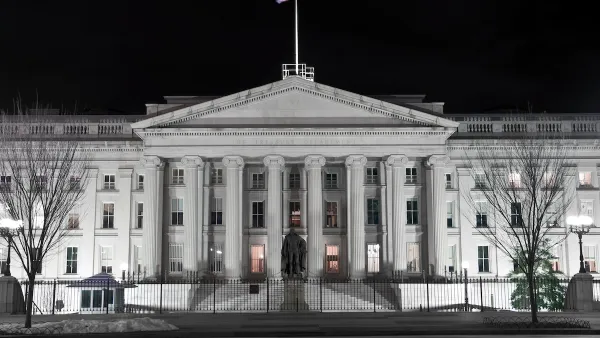The new paper, "A Roadmap for Repowering California for all Purposes with Wind, Water, and Sunlight," discusses the potential clean energy future for the Golden State by 2050.
According to a recent paper co-authored by Stanford professor Mark Jacobson, and published in Energy, California could utilize its abundant sunshine, on and off-shore winds, tides, and waves, along with geothermal heat to completely remove its reliance on fossil fuels. As John Upton writes in Pacific Standard Magazine,
“Electric cars and hydrogen fuel cell vehicles would be recharged using the renewable electricity supplies... By 2030, 80 to 85 percent of the state’s current energy supply would be replaced with clean sources. And starting in 2050, the state wouldn’t need to burn another drip of oil, hunk of coal, or molecule of natural gas—and the Diablo Canyon nuclear power plant wouldn’t be needed.”
As written in Jacobson's paper, shifting power sources would create hundreds of thousands of more jobs than it would sacrifice. In addition, the plan would save more than 10,000 lives and $100 billion in health care costs associated with pollution. Although the $1.1 trillion price tag for new renewable energy facilities seems alarming, these costs would be more than offset in the long term via climate benefits and fuel savings.
Jacobson also outlined a similar energy plan for New York State, and a broader vision for the entire world.
FULL STORY: How California Could Power Itself Using Nothing but Renewables

National Parks Layoffs Will Cause Communities to Lose Billions
Thousands of essential park workers were laid off this week, just before the busy spring break season.

Retro-silient?: America’s First “Eco-burb,” The Woodlands Turns 50
A master-planned community north of Houston offers lessons on green infrastructure and resilient design, but falls short of its founder’s lofty affordability and walkability goals.

Delivering for America Plan Will Downgrade Mail Service in at Least 49.5 Percent of Zip Codes
Republican and Democrat lawmakers criticize the plan for its disproportionate negative impact on rural communities.

Test News Post 1
This is a summary

Test News Headline 46
Test for the image on the front page.

Balancing Bombs and Butterflies: How the National Guard Protects a Rare Species
The National Guard at Fort Indiantown Gap uses GIS technology and land management strategies to balance military training with conservation efforts, ensuring the survival of the rare eastern regal fritillary butterfly.
Urban Design for Planners 1: Software Tools
This six-course series explores essential urban design concepts using open source software and equips planners with the tools they need to participate fully in the urban design process.
Planning for Universal Design
Learn the tools for implementing Universal Design in planning regulations.
EMC Planning Group, Inc.
Planetizen
Planetizen
Mpact (formerly Rail~Volution)
Great Falls Development Authority, Inc.
HUDs Office of Policy Development and Research
NYU Wagner Graduate School of Public Service





























